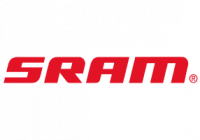S-Bend Aerobars
A version![]() of this article was originally
of this article was originally
published in Triathlete Magazine
Since Jan Ullrich started using straight aerobar extensions a couple years ago, I’ve been seeing straight extension extensions appearing under more and more pro riders. These look intriguing. Anything I should know about them before trying a pair?
Seth , CT
Dear Seth,
The variety of aerobar extension shapes coming out have made aerobars one of the most prolific categories of TT and triathlon equipment for 2005. Because of their similarity in shape and the timing of their introductions, the terms “straight” extensions and “S-Bend” extensions are sometimes used interchangeably. However, “straight” and “S-Bend” extensions were actually developed independently of each other and have some significant differences when it comes to their applicability in triathlon. “Straight” extensions first gained mass attention when Jan Ullrich used a pair to convincingly win one of the Time Trials in the 2003 Tour de France. “Straight” extensions were basically born in the wind tunnel and the contention was that they placed the rider’s hands in a more aerodynamic position and thus decreased drag. Ullrich’s success with his new TT position and equipment inspired many pro rider’s to jump on board and “straight” extensions could soon be seen everywhere on the professional road racing circuit.
While “S-Bend” bars may seem like evolutions of the Ullrich’s straight extensions, they are not. According to HED, the “S-Bend” concept had been percolating between Steve Hed and Boone Lennon (the inventor of the first mass marketed aerobars) well before Ullrich’s “straight” bars made their debut. Hed and Lennon further refined the “S-Bend” shape in late 2003 when Lance Armstrong was brought in to further test the concept in and out of the wind tunnel. With Armstrong’s input, aerodynamics, power production and comfort were all taken into account and a final design was achieved. This design was used by the USPS team this past season and is now becoming available to consumers for 2005.
So, most pro road riders are using a “straight” or “S-bend” bar, should you? Don’t expect “straight” extension bars to replace traditional extensions anytime soon for distance triathlon as they don’t offer much hand support and require an extreme wrist angle. “S-Bend” extensions, on the other hand, are likely to become a popular alternative to traditional bars for a few reasons:
The wrist angle that “S-Bend” extensions offer is between a straight extension and a traditional extension. Some riders find that traditional extensions are too tall or have too extreme an upward angle. “S-Bends” will fit these rider’s wrists quite comfortably and reduce the amount of hand motion needed to shift.
Unlike “straight” extensions, “S-Bend” extensions offer support for the hands. This can not only enhance comfort, but can give the rider a good point to brace themselves to allow for strong power output. These are the same reasons that traditional extensions are bent up and have worked well for triathlon for years.
The reach on many rider’s bikes is on the long side. “S-Bend” extensions will offer the rider a position with a shorter reach, while allowing the hands to still rest comfortably. For this reason, “S-Bend” bars will also work well for many riders who are using a more road inspired position.
“S-Bend” bars will not work optimally for everyone. The huge variety of body shapes, riding positions and techniques alone will guarantee that. However, “S-Bends” are a valid alternative to traditional aerobar extensions that will address some riders’ needs quite well. For this reason, they deserve many riders’ consideration.
Remember that a bike is the sum of its parts. Like any component, it is important to consider the big picture and how the individual part relates and affects the entire bike. If the “S-Bend” concept sounds like it will address your needs, and you find an “S-Bend” design that will work with your riding position, give them a try. HED and Bontrager are currently producing limited numbers of “S-Bend” bars, with Profile Design and others to follow by spring.
Best of luck getting ready for the season.
Ian
originally published January 2005/Copyright © 2005








